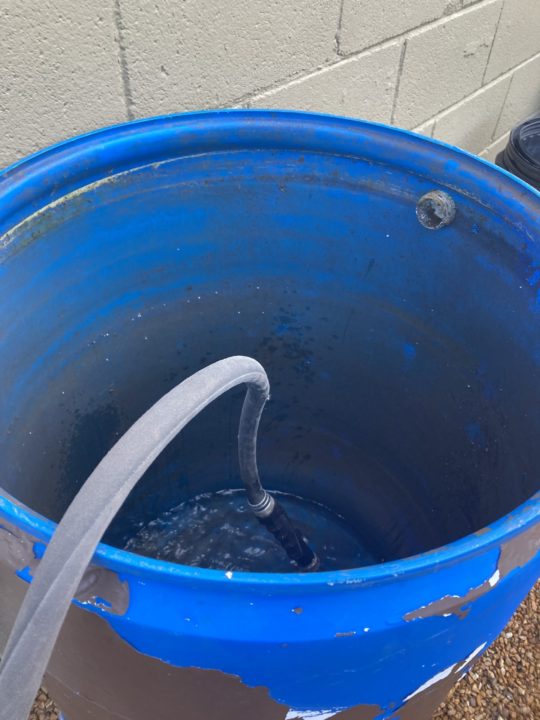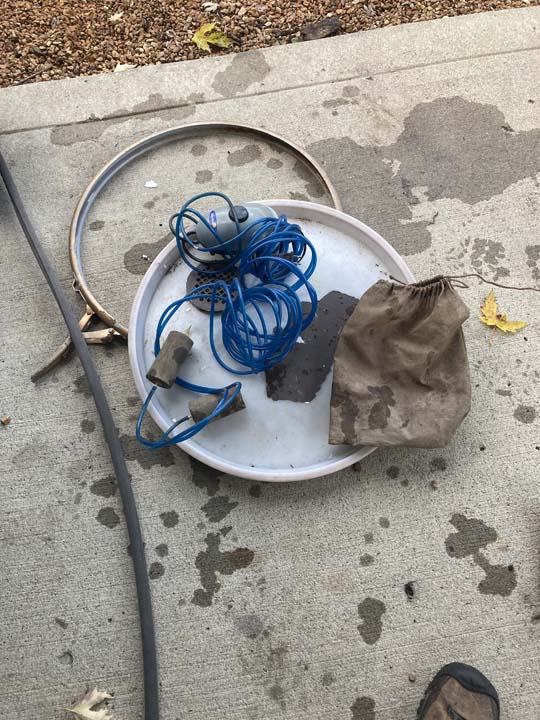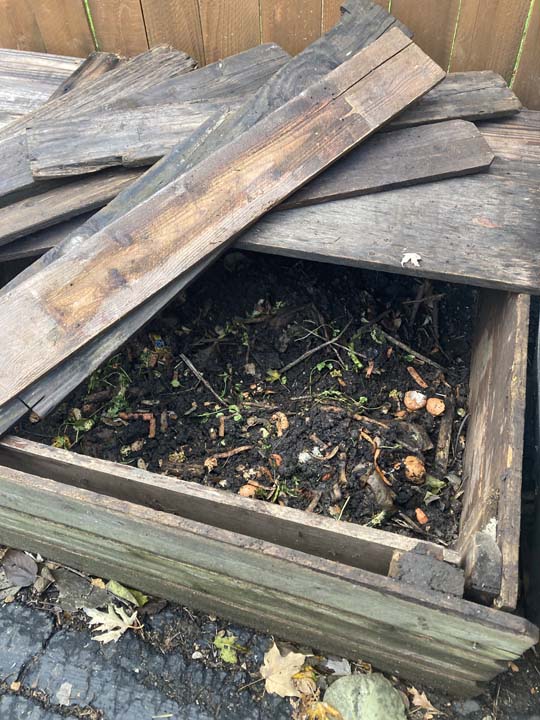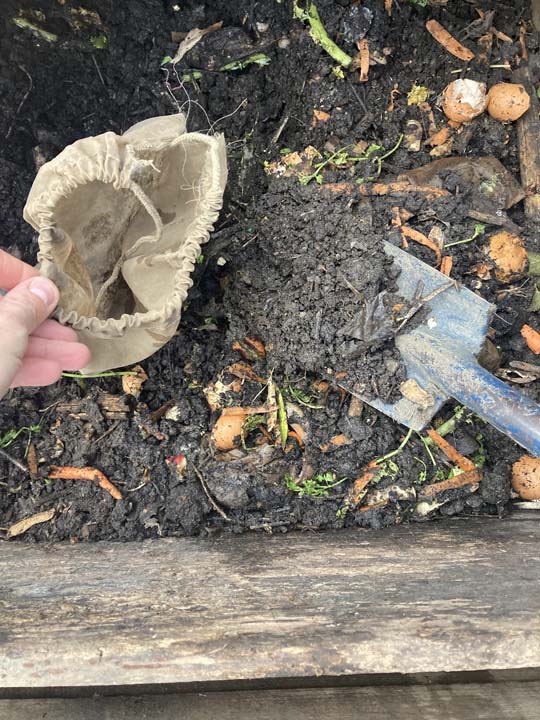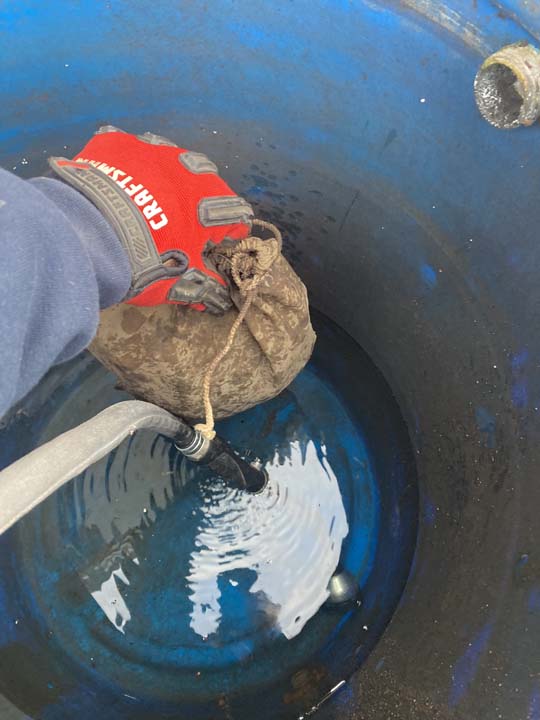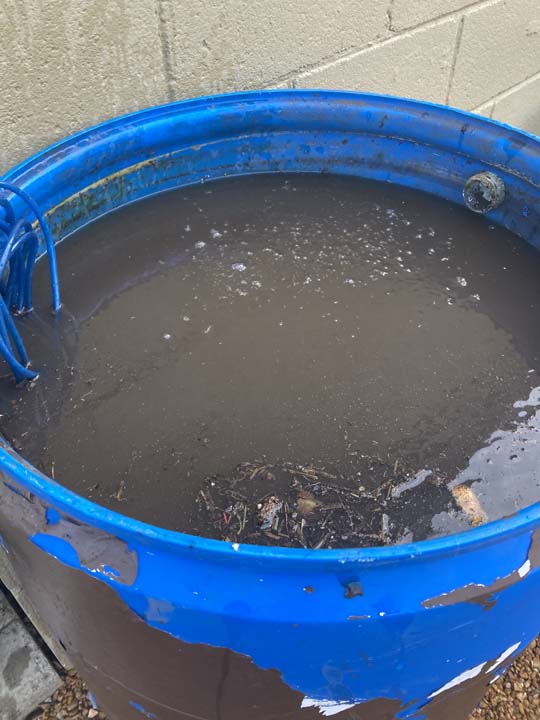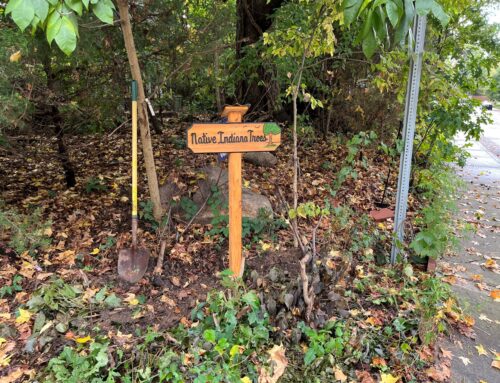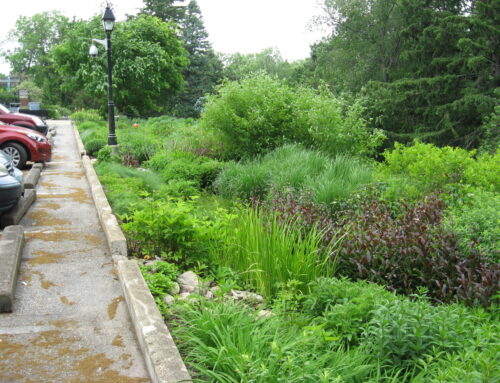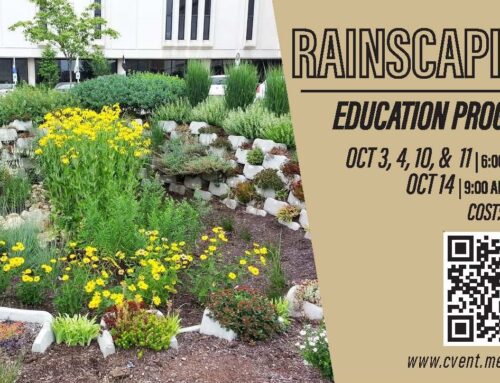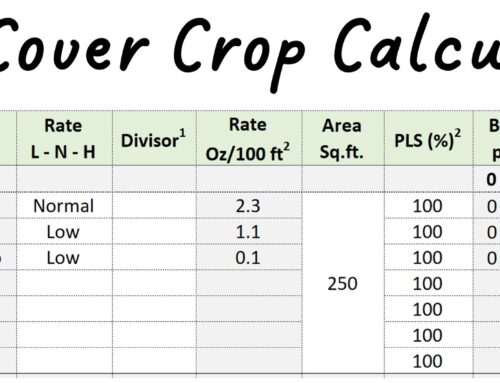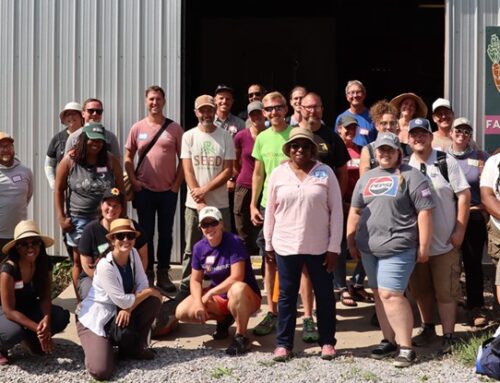By John Hazlett, SWCD District Manager
Every year around Thanksgiving I enjoy another tradition at home-brewing compost tea for my native trees and shrubs. Generally, I tend to land apply finished compost every April and early December but before I do this I brew a nice batch of compost to either wake up my trees and shrubs or in this case prepare them for a long winter’s nap! I’ve got the following native trees and shrubs in my eastside Indy yard and though they are usually dormant this late in the year they all benefit from a nice drink of compost tea around Thanksgiving:
- Witch Hazel
- Oakleaf Hydrangea
- Ninebark
- Pagoda Dogwood
- Serviceberry
- Arrowwood Viburnum
- Swamp White Oak
- Eastern Redbud
Here are the steps for brewing the compost tea:
1) Fill an empty 55 gallon rain barrel with water to a level just below the overflow. I secure this bucket on concrete blocks to make emptying it easier. See picture 1.
2) Assemble other supplies-a small aquarium air pump with air stones to add oxygen and circulate the tea while brewing, a small mesh bag, a lid for the rain barrel. See picture 2.
3) Access compost bin and fill small mesh bag with finished compost only-see pictures 3 and 4. My compost bin has been breaking down for several months and includes coffee grounds/brown filters, veggie/fruit scraps (no citrus or onion), eggshells, and dead plant material.
4) Seal mesh bag and drop into the barrel as it fills. See picture 5.
5) Drop in air stones and run the pump for 1-2 weeks. Keep the rain barrel lid on throughout the brewing process. See picture 6.
After the tea is brewed, I fill a 5-gallon bucket and apply it at the base of my trees/shrubs. It’s fun and keeps these species healthy! I then set the compost from the mesh bag aside and use it as a starter for my winter compost pile which I’ll use for tea again in the Spring. My finished compost is applied around plants as I cut them back for the winter or Spring, making sure to leave approximately 18” of stem for bee nesting. Usually, I will pile the finished compost over chopped leaves to further increase organic matter in my urban soil.


